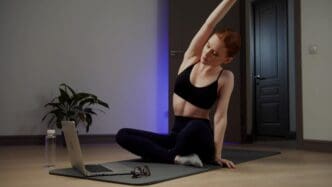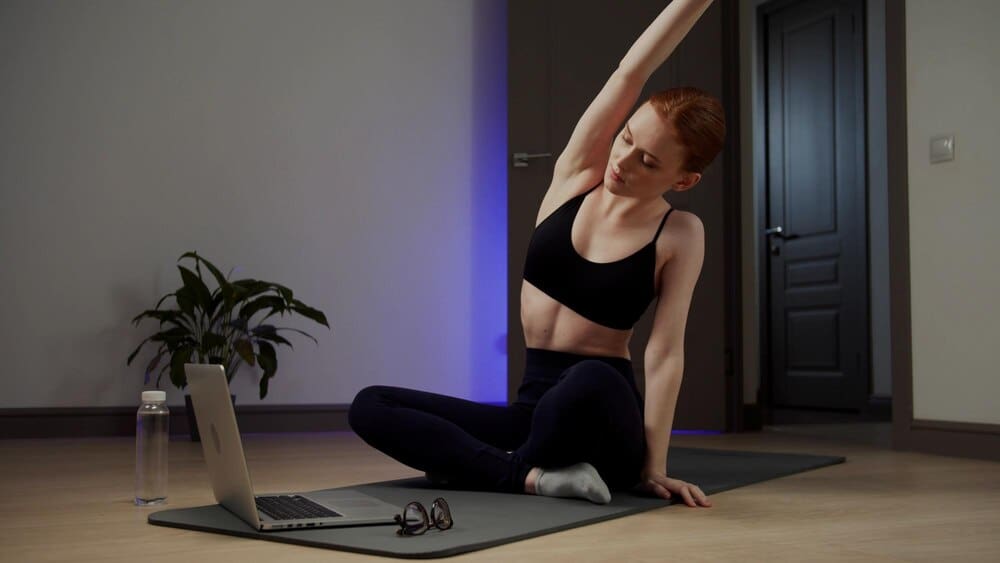Deciding where to exercise is one of the most fundamental choices impacting anyone’s fitness journey, with the debate between a commercial gym membership and a home workout setup standing at the forefront. For individuals seeking to build a sustainable wellness routine, the best option hinges on a careful evaluation of personal budget, lifestyle, motivation style, and specific fitness goals. While gyms offer unparalleled equipment variety and a motivating community atmosphere, home workouts provide ultimate convenience, privacy, and long-term cost-effectiveness. Ultimately, the most successful environment is the one that removes the most barriers to consistency, ensuring that exercise becomes a lasting habit rather than a fleeting resolution.
The Allure of the Commercial Gym: Community, Variety, and Motivation
For many, the structured environment of a commercial gym is the catalyst needed to transform fitness intentions into action. The primary advantage lies in the sheer volume and variety of professional-grade equipment available, something that is nearly impossible to replicate at home without a significant financial investment and dedicated space.
Unparalleled Equipment and Variety
A standard gym provides access to a vast arsenal of tools designed for every type of workout. This includes extensive cardio sections with treadmills, ellipticals, stationary bikes, and rowing machines, allowing you to vary your routine and prevent overuse injuries. For strength training, the options are even broader, ranging from a full spectrum of free weights and dumbbells to squat racks, bench presses, and a complex array of resistance machines that isolate specific muscle groups.
This variety is not just a luxury; it is a critical component for long-term progress. Regularly changing your workout stimulus helps to prevent plateaus, where your body adapts to a routine and stops making gains. Access to different machines and heavier weights allows for progressive overload—the principle of gradually increasing the demand on your muscles—which is essential for building strength and endurance.
The Power of Environment and Community
The psychological impact of a gym’s environment cannot be overstated. Simply traveling to a dedicated location for exercise creates a mental shift, separating your workout from the distractions of home life, such as household chores, family demands, or the temptation of the couch. This dedicated space helps you focus entirely on your fitness for a set period.
Furthermore, gyms foster a sense of community and shared purpose. Being surrounded by other people who are actively working toward their health goals can be incredibly motivating. This collective energy can push you to work harder than you might on your own. It also opens the door to social connections, whether it’s finding a reliable workout partner or simply sharing a nod of encouragement with a fellow gym-goer.
Access to Professional Guidance and Classes
Gym memberships often include access to a wealth of professional resources. Group fitness classes—from high-intensity interval training (HIIT) and spinning to yoga and Zumba—offer structured, expert-led workouts that take the guesswork out of your routine. The energetic atmosphere and curated playlists make exercise feel more like a fun activity than a chore.
For those needing more personalized attention, gyms are staffed with certified personal trainers. Hiring a trainer, even for a few sessions, can be invaluable for learning proper form, preventing injury, and developing a customized workout plan tailored to your specific goals. This guidance is especially crucial for beginners who may feel lost or intimidated by the equipment.
The Financial and Logistical Downsides
Of course, the gym experience comes with its own set of challenges. The most obvious is the cost. Monthly membership fees, coupled with potential initiation and annual fees, can represent a significant recurring expense. This financial commitment can become a source of guilt if you are not using the membership consistently.
Logistics are another major consideration. The time spent commuting to and from the gym, plus finding parking, can add a substantial block of time to your workout, making it difficult to fit into a busy schedule. Moreover, gyms can become extremely crowded during peak hours, leading to frustrating waits for popular machines and disrupting the flow and intensity of your workout.
The Convenience of Home Fitness: Flexibility, Privacy, and Cost-Effectiveness
The primary appeal of working out at home is summed up in one word: convenience. By eliminating the barriers of travel and fixed schedules, home fitness makes it easier than ever to integrate physical activity into your daily life.
Ultimate Convenience and Flexibility
With a home workout setup, your gym is always open. There is no commute, no packing a gym bag, and no worrying about opening or closing times. This unparalleled flexibility allows you to exercise whenever it fits your schedule—whether that’s a quick 20-minute session before work, a full routine during your lunch break, or a late-night stress reliever.
This convenience is a game-changer for individuals with demanding jobs, parents juggling childcare, or anyone with an unpredictable schedule. When the gym is just a few steps away, it becomes much harder to make excuses. Inclement weather, traffic, and other external factors no longer stand in the way of your workout.
Cost Savings Over the Long Term
While setting up a home gym involves an initial investment, it is often far more cost-effective in the long run. There are no recurring monthly fees to worry about. You can start with a minimal amount of inexpensive equipment, such as a yoga mat, a set of resistance bands, and a pair of adjustable dumbbells.
Even bodyweight exercises—like push-ups, squats, planks, and lunges—are incredibly effective and completely free. As your fitness progresses, you can gradually add more equipment to your collection. Over several years, the total cost of a well-equipped home gym can be significantly less than the accumulated fees of a commercial gym membership.
Privacy and Comfort
For many, especially those new to exercise, the public nature of a gym can be intimidating. The fear of being judged for using equipment incorrectly, not lifting heavy enough, or simply not looking a certain way can be a major deterrent. A home workout environment eliminates this “gymtimidation” entirely.
At home, you have complete control. You can wear whatever is comfortable, grunt through a tough set, and play your own music as loud as you want without wearing headphones. This private, judgment-free zone allows you to focus solely on your movements and build confidence at your own pace.
The Challenges of Working Out at Home
The greatest strength of home workouts—their flexibility—can also be their greatest weakness. Without the structure of a class or the financial incentive of a membership, working out at home requires a high degree of self-discipline. The same home environment that offers comfort can also be filled with distractions, making it easy to postpone or cut a workout short.
Additionally, space and equipment limitations can eventually hinder progress. It may be impractical to house large machines or a full rack of heavy weights. This can make it more challenging to implement progressive overload and add variety, potentially leading to fitness plateaus. The lack of in-person professional guidance also means you are solely responsible for ensuring your form is correct to prevent injury.
How to Decide: A Personalized Approach
The right choice is not universal; it is deeply personal. To find the best fit, you must honestly assess your own personality, resources, and objectives.
Analyze Your Personality and Motivation Style
Consider what truly motivates you. Are you a self-starter who thrives on independence and can push yourself without external pressure? If so, the autonomy of a home workout may be perfect. Conversely, if you feed off the energy of others and need accountability, the community and structure of a gym will likely serve you better.
Evaluate Your Budget and Logistics
Take a realistic look at your finances. Can you comfortably afford a monthly gym membership without it causing financial stress? Calculate the total annual cost, including any hidden fees and transportation expenses, and compare it to the one-time cost of the home equipment you would need. Also, consider your daily schedule. If adding a 30-minute round-trip commute makes a one-hour workout feel like an insurmountable task, a home setup is the more practical option.
Define Your Fitness Goals
Your specific goals should heavily influence your decision. If you are a competitive powerlifter or bodybuilder, the specialized, heavy-duty equipment at a commercial gym is virtually non-negotiable. If your goals are centered on general health, functional fitness, weight management, or flexibility, a home workout routine can be more than sufficient to achieve fantastic results.
The Best of Both Worlds: The Hybrid Model
It is important to remember that this decision does not have to be a strict binary. A hybrid approach can offer a sustainable and effective solution, combining the benefits of both environments. This could involve creating a basic home setup for daily convenience—think yoga, bodyweight circuits, or light cardio—while maintaining a less expensive, basic gym membership for one or two weekly sessions dedicated to heavy lifting or a favorite class.
This model provides maximum flexibility. On busy days, you can squeeze in a quick and effective workout at home. When you crave community or need access to heavier weights, you have the option to go to the gym. This balanced approach can keep your routine fresh, engaging, and adaptable to the demands of your life.
Ultimately, the debate over gym versus home workouts is less about which one is definitively superior and more about which one is superior for you. The most effective workout plan is the one you can stick with consistently over the long term. Whether it’s in a bustling fitness center or the quiet of your living room, the key is to choose the environment that empowers you to show up, do the work, and build a healthier, stronger version of yourself.







